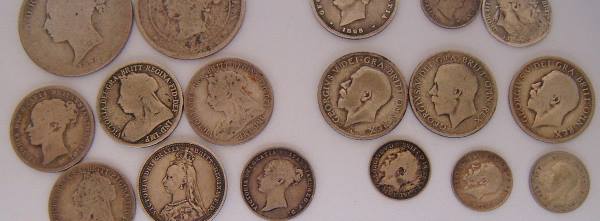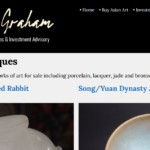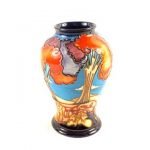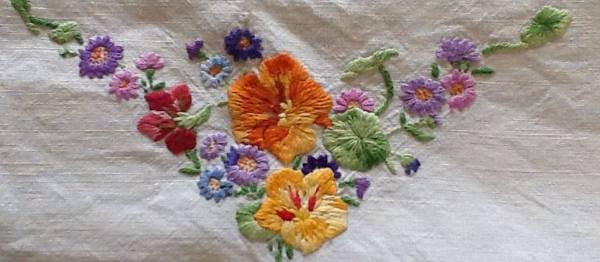The reasons go back a long way. As with most things you do in life – choosing a partner, deciding on a career, buying a home, starting a collection – the seeds are sown in childhood. Here is my story.
I was born in Paris to a French father and English mother. That mix helped me to participate and greatly enjoy two cultures, beginning when 1 grew old enough, to shuttle regularly across the channel. My parents divorced, but remained friends, so I was encouraged to learn both languages.
Later I attended the Sorbonne University. With a very limited knowledge of French I vas a “sponge” for eves bit of culture going. The Jeu de Paume with its magnificent collection of Impressionists was my favorite art gallery. The Muse des Arts Decorative lit in me a flame of joy for tapestries, needlework, and the many decorative antiques to be found in the home: That flame has burned steadily for 20 odd years.
Returning home after graduation, I entered the sober, under fed, over optimistic portals of The Royal Academy of Dramatic Art and have worked since then as an actress. Early on, my antiques involvement was for the added income, as much as for my love of antiques.
Eventually, I persuaded my mother, Betty Huntley Wright, to join me. We took a terrific gamble, signed a year’s lease, and moved into Antiquarius, an antiques market in the Kings Rd. Chelsea.
I needed to specialize in something small, but what? One day, after we had been trading for a couple of months, onto my stand stepped a shabby but kindly looking man, who wanted to sell his deceased grandmother’s sewing tool collection. A small but lasting passion took root!
I persuaded my indulgent bank manager to lend me £500 ($700) and bought the collection. I knew nothing about any of it, but l loved it: I read, researched, asked questions, gleaned information wherever possible. Slowly, the word spread, and people came to the stall from everywhere and bought the tools.
There was so much interest, and so many letters requiring information, that we started The Thimble Society by subscription, in the winter of 1981. It was easier to write up all the gathered information in the form of a quarterly magazine than write to each collector separately
We concentrated mainly on thimbles, as they were the most popular with the majority of collectors. I remember sitting in my basement flat, collating the handwritten material, and then hand drawing each thimble and photocopying and stapling cash magazine. I dial not possess a camera, or know how to use one.
Personally, it had been love at first sight. The variation, imagination and delicacy of workmanship on the tools and, thimbles had cap- turgid my heart. I continued my acting career by night, but the problem was finding enough sewing items during the day to satisfy a growing demand. It was impossible to have my own collection, because there were not enough goad items to bath keep a business going and save for myself. My first laves were the Palais Royal tools. They are still to me the acme of elegance and transparent beauty, perhaps because of my early admiration of French culture.
I think it was William Morris who said, “If the goads are excellent, wherever they are sold, men will beat a path to their door.” I don’t think he had experiences of London Antiques markets, where the choice is enormous, but we were becoming known. It was exciting, going to the big London salesrooms and searching for unrecognized, or miscataloged treasures.
After a year, Mum and 1 decided to take a bigger stand in the main aisle of Antiquarius, and we began to print the Society magazine with color pages. I even bought an Olympus camera and taught myself photography. There were some very hairy weeks, and panic attacks, but we always seemed to get that sale we needed just in time to pay the rent and the printer. Of course the uncertainty and sense of a gamble is probably part of the seductive charm of one’s passion.
The sewing tools were becoming more popular, and people were traveling from all over the world to see us, which was a help. Working in television and plays at the same time was fun and kept` me fresh, but inevitably people will’ accuse you of spreading yourself too thin on both counts. Probably true, but I have never had a boring day, for which I thank providence.
My stage life was going well, and we continued to improve our antiques premises, and had moved to Grays Antiques an antiques gallery just off Bond St. There we had a bigger stand, covered in thimbles, silver needle cases, mother-of-pearl sewing tools, and every imaginable elegant female collectible item. Our membership was growing, and other magazines were asking me to write article and do photos on the history of sewing tools.
I decided my education was insufficient for my growing writing opportunities, so I enrolled for a degree in literature and art history with the Open University. I attended part time, and graduated seven years later. It was a life changing experience that I recommend to anyone.
About this time, Annie Elkins joined the firm. In fact, Annie has been with the Thimble Society for nearly it’s entire 20 years. It is a great joy to work with a colleague who is so good at her job, fun to be with, and mindful of all the members needs.
One growing request was that the Thimble Society members wanted to have a big annual meeting. Our two most successful venues, in my opinion, were Cauis College Cambridge and Kemble College Oxford. We held three-day events, with talks, slides, sales malls, panels of experts – you name it, we did it.
In the early 1990s my mother died. There will always be a sense of loss, but with Annie to help me, we continued to thrive. Our next venture was to take a stand at Olympia: perhaps the biggest antiques fair in the world. When we opened, it was the first time there had been a stand devoted to sewing items.
Sitting in Grays a few years later, adding up the weeks invoices, I didn’t realize that the gentleman waiting on the other side of the counter was the well known American publisher Peter Schiffer. He suggested I do another book on thimbles. I say another because 1 had written The Collectors Guide To Thimbles in 1994, published by Random House (now out of print). I agreed and The Start’ of the Thimble, came out in 1997, followed by The Story or Antique Needlework Tools, in 1999. Both books, published by Schiffer, have been well received.
Writing books i5 not easy, nor does it make your fortune, it adds greatly to your knowledge, and is very satisfying, once it is finished! But there is a point, just over half way through, when you think root canal treatment without an injection, would be preferable.
With new opportunities in the film industry, I was finding it increasingly difficult to run Grays on a daily basis. I decided to move to the Portobello Studios, 101 Portobello Rd., Saturdays only, antiques market.
The letters that come from all over the world are a delight. Clearly, collecting antique sewing tools and thimbles is here to stay as one of the growing major fields of the future. We collectors have all helped put our small but delectable passion on the antiques map, and in our own way we have added to the sum total of historic knowledge, especially from the female perspective.
We have inquiries from readers as far way as the Ukraine, Central America, Mexico, and China. We have new young members who can’t yet reach the counter, and one woman whose age will span three centuries, as she was born in 1899.
I would like to say thank you to all the other collectors who share my passion and enrich my life. Perhaps my books will, in some small way, contribute to our joint enjoyment and endeavor.








